I’ve done a lot of interesting work over the years, but one of the most random yet rewarding ventures has been building and managing my website that sells hot tub covers. When I mention to people that I own a site that sells replacement spa covers, they usually give me a strange look. I don’t blame them. After all, I don’t own a hot tub, and have never set foot inside a store that sells spas or spa covers. It’s quite a niche market to be sure. But this niche market is incredibly competitive, and has paved the way for me to learn just about everything I need to know about building, marketing, and managing an ecommerce website.
Part of the inspiration for sharing this story comes from one of my favorite sources about ecommerce startups – the “Bootstrapped, Profitable, and Proud” series by 37Signals. It contains some incredibly inspiring stories about small companies that built substantial fortunes without the help of investors and outside funding. They profile various businesses, from website hosting companies like A Small Orange, to payment gateways like Braintree, and much more esoteric businesses. For example, one of my favorites in the series outlines how a duo was able to build a DIY LED lighting website that generates $1m+ in revenue. In each article, the founders share their experiences, highlighting the ups and downs of their journey.
One afternoon in 2009, I was on a conference call with the owner of a website that sold spa covers. I gave him some advice on how to do SEO and get more traffic, and a few days later he approached me with an offer to create a new website to sell them, where I’d keep 50% of the net profits. Thus, Hot Tub Cover Depot was born. To date, we have sold well over $1m in spa covers, and each month it generates a solid couple thousand of income on top of my normal salary. These earnings are modest compared to many other ecommerce sites, but I expect our sales to double in 2014.
First, let’s get a quick breakdown of the current figures for the site:
Total yearly sales 2013: $216,295
Total covers sold: 608
Average monthy sales: $18,024
Our setup
One thing I’ve learned from building and working with a lot of different ecommerce sites is that you need to be smart about the platform you use. Once you build a store, add hundreds of products, and get customer data, it can be really tough to make a smooth transfer to a different platform. I build Hot Tub Cover Depot using WordPress, and when I began there wasn’t a great option for a shopping cart. I used Cart66 for a few years, and then Woocommerce burst on the scene in 2011. I quickly made the switch in January of 2012, and haven’t looked back. Woocommerce built a great ecommerce platform, and I previously wrote about how they skyrocketed in adoption and popularity. I love its modular nature, and the flexibility it allows you to customize your store by adding plugins to extend functionality.
Our payment gateway relies on Paypal Pro, and while it may not be my first choice (I like Braintree, which we use on another site) it does the job and is easy to setup. For hosting we use Dreamhost, which has been my personal choice for 8+ years, although I must admit that I like A Small Orange a bit more and would recommend them as my top choice. We use Gravity Forms to design the product order forms because they involve quite a bit of custom options.
Old school SEO
When we first started out, it was the heyday of SEO. By “heyday” I mean you could still game things pretty easily, and our primary way of getting traffic was to climb the search engine rankings for our target keywords like “hot tub covers” and “spa covers”. Despite what you think, competition is tough, and a lot of our competitors were doing the same thing. We wrote articles, spun them into illegible crap, and then posted 20 versions on different article directories. We used blackhat tools like SEnuke and Scrapebox to set up big link schemes and blast comment spam that was rich with exact match anchor text. Obviously this was not the best approach, and while we might have been rewarded at times with short term gains in rankings, the overall results were not sustainable.
Listening to your customer’s needs
If you have ever tried to order a spa cover online, you know it’s not the easiest thing to do. Each cover is made to order, and requires the customer to input a fair deal of information. Most notably, they need to get the measurements right or it will not fit. We take pride in delivering a cover that fits perfectly and meets the needs of our customers, so understanding where they were encountering questions or trouble when order was crucial for our growth.
To that end, we did a few things. First, we made it explicitly clear how to take measurements by providing a printable corner measure template and a full page of measuring tips. Despite offering the “build your own” type order form, it was clear that many customers just wanted to get a replacement by entering their make/model. I put together a massive spreadsheet that included every major manufacturer’s dimensions and then we used a bulk upload tool to add a unique page for every single make and model spa cover. That way, we provided customers another way to find the right cover without measuring. As a side benefit, we now had 700+ new “products” on the site, all of which could be found by search engines.
We also began using a live chat plugin to interact with customers online. They have lots of questions, and with Zopim, we could gather a lot of insight into what they frequently needed to know. It became obvious that their questions centered around a few things. They wanted to know about shipping times, and learn more about what the various upgrades and options meant. After learning what they needed to know, we put together a more robust set of resource pages that explain the features and options of our covers much clearer.
At this time, we’re testing a new tool by Granify that delivers dynamic messages to the customer when they are at the checkout. Our hope is to instill trust and confidence by learning what motivates them – free shipping, knowing that a customer rep will follow up to ensure the order is perfect for example. While still in the trial phase of our usage, the results do seem promising.
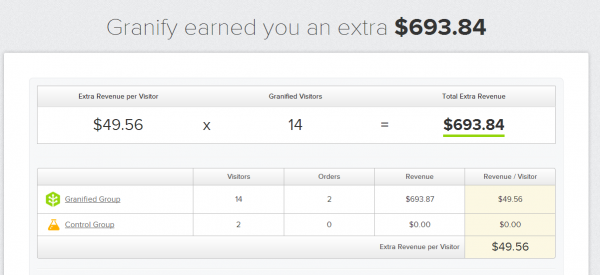
Granify helps us identify pain points in the customer’s journey by displaying dynamic messages and measuring the impact on sales.
Creating content
It’s not exactly easy to write compelling content about spa covers. There’s only so much you can do, but I did find a few tricks. One thing I do is to look for mentions of “spa covers” on Twitter. Often I find funny tweets where someone complains about their dog breaking the cover, or a storm that blew it off the tub and through a neighbor’s fence. People frequently get injured by covers when they fall on their heads as they try to put it on. So I got the idea to put together a recurring series titled “Mishaps and adventures of hot tubbing” where I take screenshots and link to these funny tweets or videos from Youtube.
It’s also important to consider the extended lifestyle that’s associated with your customers. In our case, a lot of people use their hot tub in the winter while skiing or enjoying a mountain escape. We got the idea to pull together collections of the most beautiful views from hot tubs, or really nice custom designs. Another successful piece of our content comes from the DIY articles, which I put together by curating content from around the web. People love the do-it-yourself stuff, and that has been a great way to attract search engine visits.
Remarketing/Advertising
I set up a Perfect Audience retargeting campaign and have been fairly pleased with its results. At a low budget of $25/week, we can re-engage customers who left the site without purchasing. Our approach has been to create mostly 300 x 250 size ads, which seem to get the best clicks. We make several versions of each one; the first might include a coupon code, the next emphasizes the free shipping, and another might touch on our customer service. By taking a slightly different angle with each ad, we can find which one motivates buyers and then stick with that.
Redesign for user experience and ease
Each year in January, during the slow season, I spend some time redesigning the website. Often this means building an entirely new look and feel. The latest iteration was done using the Flatsome theme which I purchased at Themeforest. It’s a clean, modern look that’s a great improvement over our past designs. We still need to get a professional logo developed, which I think would add to the trust factor.
Conversion optimization
Our conversion rates have hovered around 2% for a long time, but recently they have been hitting 4-6% on many days. I attribute this to a redesigned site that offers more trust, and a cleaner presentation that provides customers the resources they need. Other engagement metrics like pageviews and time on site shot up, while bounce rate has decreased. I also made an effort to highlight our unique selling propositions, including free shipping for example, which many customers would ask about. When they know about the free shipping and lead times for delivery, it instills a lot more trust.
Another strategy we employ is to use popups to provide visitors a quick message and a coupon code. I have noticed quite a few sales coming in that use the coupon code, so this appears to be working well. We use Ninja Popups for WordPress, which can be had at Codecanyon for a paltry $21. In addition to offering a discount via the popup, we also used the Social Coupon for WordPress plugin, which prompts users to “like” or tweet a link to our website. In return, they get a coupon.
Marketing via product feeds
When you sell products online, it’s important to think about where your customers might be when they aren’t on your website. One way to ensure you stay in front of them is by setting up product feeds at various sites, and by advertising with product listing ads on Google’s shopping network. While we have explored this to some degree, and found it to be very successful, there’s still a lot of room for us to grow our presence across other networks.
Mixed results from PPC
Over the years I have played around with paid advertising, and found mixed results. On Google, the average cost per click can reach upwards of $4 for some of our target keywords, and the ROI just isn’t there. Lately we’ve been exploring Bing Ads, which seem to deliver a much lower CPC, but I’m still unsure about the overall results. While we did see a few sales from Bing, it’s too early to say whether the ROI is large enough to continue pursuing this strategy.
Still a lot to do
With the ever-increasing importance of customer reviews we are hoping to encourage more reviews from past customers. Currently we have none, which is a bit of a problem. However, in the past we conducted email campaigns that encouraged customers to leave reviews on our Facebook page, and on sites like rateitnow.com with positive results. There’s still a lot we can do to improve the site on a number of levels, and I think the important thing is to remain focused on one thing and not get distracted. As Stephen Covey says, “The main thing is to keep the main thing the main thing”.

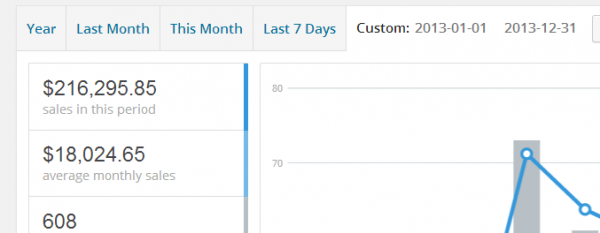
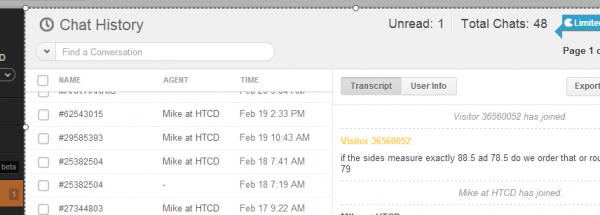
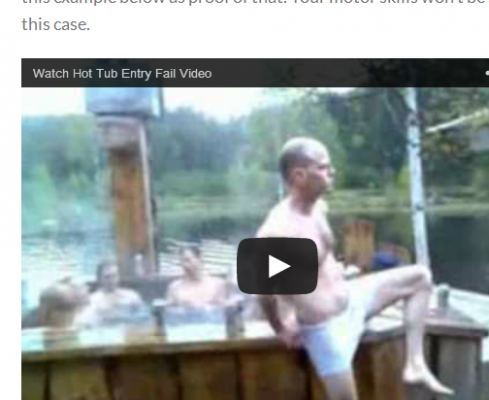
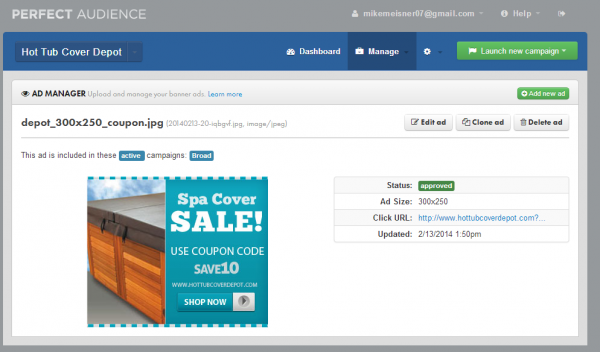




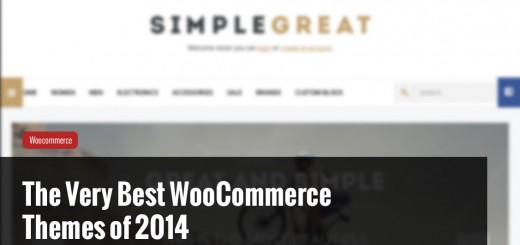
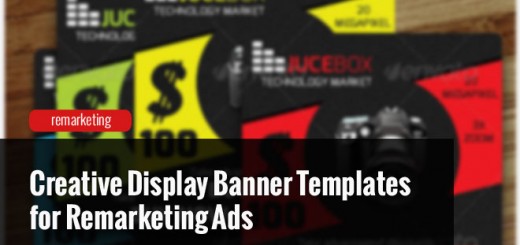
Well written and honest post. Thanks for the information.